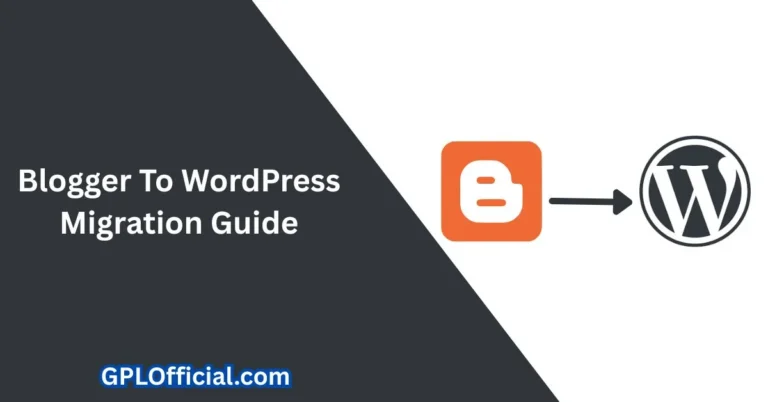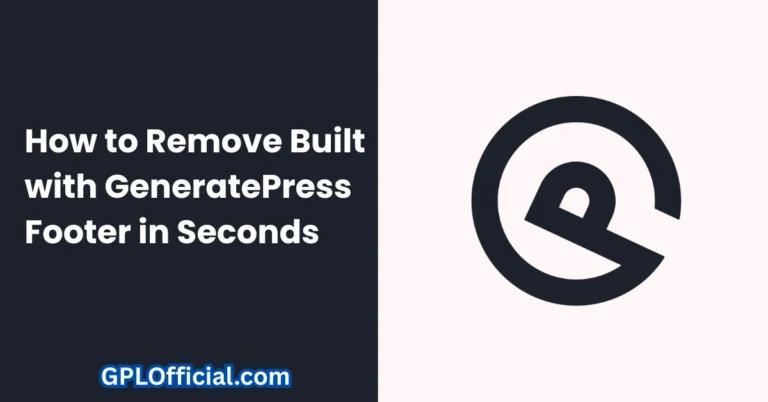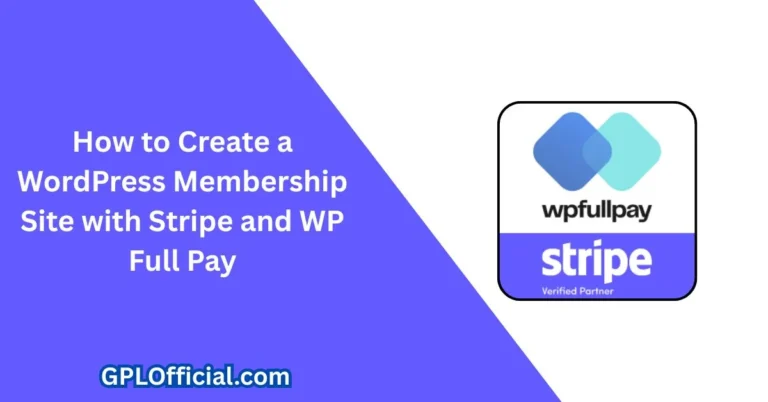How to Become Addicted to Coding: 5 Steps to Rewire Your Brain
What if I told you that coding can become as addictive as scrolling on your phone? The same dopamine hit you get from every single scroll will be equivalent to what you get with every line of code that you write.
So in this article, I’m going to be going over five things that I did to rewire my brain to be addicted to coding. “Oh my god, you’re such a nerd!” Well, guess what? This nerd earns hundreds of thousands of dollars every single year because he knows how to code.
So just chill, sit back and relax, and I’ll teach you how to do the exact same thing.
Step 1: Understanding Your Why
The first step to becoming a coding addict is understanding your why. Why do you want to learn how to code? Is it so you can earn hundreds of thousands of dollars as a software engineer? Is it because you want to build an app, or is it just a hobby to make your life more efficient?
In my case, I really like problem solving. As a kid, math was always my best subject. Obviously in math, like algebra or calculus, you do a lot of different problems in which you solve for X.
Very similarly, in computer science and coding, it’s problem solving. But instead of handwriting math formulas, you write code in Python or Java to solve the problems. And so that’s why I learned how to code.
So I guess I was a little bit of a nerd. But it’s important that you have a good reason why you want to learn how to code, because coding is hard. You will struggle.
But in order for you to even start liking the process of even struggling, you need to have a strong purpose so that you’ll see every failure as a stepping stone rather than a roadblock.
Creating Your Plan
But you can’t just stop at why you want to learn how to code. You need a plan that maps your goal into daily actions.
For example, if you want to get a software engineering job, your plan might include mastering a specific tech stack such as MongoDB, Express, React, Node – the MERN stack. But specifically within that, are you going to use Free Code Camp for React, or are you going to use MongoDB University to learn MongoDB?
I want you to be very, very specific as to what you’re actually going to do. Because most people don’t quit coding because it’s hard per se. They quit because they don’t know where to start, what resources to follow, or what to do when they’re stuck.
And so once you have those things mapped out into a particular roadmap, now we can actually go in and work step by step to getting our brain to be addicted to this stuff.
Step 2: Love the Reps, Not the Results
You need to focus on inputs, not just the outcomes. Now this might get kind of weird because we’re talking about addiction here, but I want you to picture this:
There are some people out there that are really addicted to candy. They can’t stop eating it, and then over time they end up getting fat. Now their main focus when they’re going through this process is every time they eat a piece of candy: “This candy is so good! This candy is so yummy!”
They’re just focused on each piece of candy that they’re able to put in their mouth. They don’t care about the consequences. They don’t care about the outcome. They don’t care if they get fat.
And although that’s a bad addiction, what if we made coding a healthy addiction? So instead of obsessing over landing a job, finishing a project, or chasing a high-paying programming language, what if you just focused on the act of coding itself?
What if you just committed to coding for 30 minutes every single day, or committed to solving one LeetCode problem every single day? In fact, one of my friends used to start his day every day with one LeetCode problem.
And obviously at first it was hard, but over time he got better at it and he even started liking it. So much so that even after he landed his software engineering job, he continued to do a LeetCode problem every day because he just enjoyed the problem-solving process.
Starting Simple
But start simple. Code for just 30 minutes a day. If that’s too much, just do 15 minutes. Or instead of measuring it based on time, commit to coding 20 lines of code a day. Cut it down to whatever you can manage.
But the most important thing is you don’t feel like it’s too much of a burden day in, day out. And what you’ll see over time is all those fears that you had about coding will slowly disappear.
Because once you code it down to, say, 10 lines of code a day, you realize, “Huh, this isn’t actually too bad. And I have a sense of accomplishment. I actually like it. And maybe let me just start coding 50 lines of code a day.”
And just like the person that started eating one piece of candy every single day thought to himself, “Hey, it’s not that bad. It tastes pretty good,” then he increased it to two pieces of candy, then three, then four, and naturally allowed himself to eat more and more.
Similarly, you will naturally allow yourself to code more and more.
Using the Pomodoro Technique
Really quick: if you want to break into tech and become a software engineer, Coursera has two beginner-friendly learning paths that can help you get there. These are hands-on, project-based courses designed to teach you the real skills companies hire for.
The full-stack developer path covers everything from HTML, CSS, and JavaScript to backend technologies like Node.js, Express, and databases. You’ll also dive into modern tools like Docker and Kubernetes. And by the end, you’ll have a capstone project that you can actually show on your portfolio.
The software developer/engineer path focuses more on programming fundamentals with languages like Java, Python, and C. You’ll learn software design, debugging, testing, and how to build applications with real-world tools used in the industry. At the end, you’ll have industry-specific skills plus a polished resume showcasing all the projects you built.
And right now is the best time to sign up for Coursera, as for a limited time they’re offering 50% off their annual subscription. Click the link down below in the description to sign up right now. And now back to the article.
But I get it – some of these 30-minute coding blocks can be pretty difficult for some people. Well, I mean, TikTok has done a number on a lot of you guys’ attention spans.
So try using the Pomodoro technique where you work hard for 25 minutes and then you take a rest for 5 minutes. Work for 25, rest for five, cycle repeats. Through this, you’ll slowly build momentum, and over time you will do more work and less of the rest.
But remember: the goal isn’t to be perfect. It’s just to show up consistently and let the small wins compound.
Step 3: Optimize for Dopamine
Now that we set a baseline for how coding can become addictive, it’s time to crank up the dopamine. We need to supercharge our reward systems and really hack our brains.
So step three is to optimize for dopamine. Everyone that is a human being loves short-term gratification. As soon as I go on TikTok, I see a cool article of a very handsome guy – I’m satisfied. Or as soon as I pop a piece of chocolate in my mouth, I love that I got a burst of dopamine.
But how can we do the same thing with coding? So obviously when learning how to code, you’re going to be doing a lot of coding projects. And like I said before, you need to get very specific with the plan of how you’re going to build the projects.
Breaking Down Projects
If you want to build an application, don’t just say “I’m going to build an app.” Break it down. Start with: “I’m going to build an app with a login, dashboard, and messaging feature.”
Then zoom in further. For the login: “I’m going to create a username and password field and two-factor authentication and style the input boxes to be 100 pixels wide.” For the dashboard: “Display a welcome message with the username. Fetch mock data from an API and show it on a table.” For messaging: “Start by rendering a static chat bubble. Then wire it up and send display messages in real time.”
These tiny tasks are trackable accomplishments. And each one is a win. And each win gives your brain that sweet hit of dopamine to keep going.
And this is important because you’re not going to be building huge applications in one day. You’re not going to become a six-figure software engineer overnight. It takes time. But every tiny accomplishment builds momentum, and over time you build a snowball of accomplishment with great momentum and you become very successful.
Using Habit Trackers
And something you guys can use are coding habit trackers like Loop Habit Tracker or a Notion board that allows you to change the status of particular items. Or if you’re working on GitHub, the contribution graph which can highlight certain squares of a certain color – and the darker that color is, the more code you have contributed.
And I remember when I first started my job, I would see my code contributions. And I knew that if I made 30 contributions in one day, I would have a dark blue square at the end of the day. And at the end of the week, I made it my goal to have five squares side by side by side, all dark blue.
And it became something that I would strive towards. And that caused a sense of addiction because it was positive reinforcement at the end of the day and at the end of the week.
Building Community
But also, if you want to build a really good and strong addiction, you need friends that are addicts. If you have five friends and all they love to do is eat a bunch of dessert, candies, and sodas, chances are over time you’re going to start eating a lot of dessert, candies, and sodas and probably develop a sugar addiction.
Similarly, if you have friends who are also trying to go through their own coding journeys, try to set up weekly co-working sessions on Zoom or try working on a project with them or create a shared Notion page where you post daily updates of what’s going on, because accountability really, really helps you stay on track.
But also, if they’re your friends, they make the whole process way more enjoyable. And speaking of accountability, try setting up different group challenges. Maybe “we’ll all ship one feature by Friday on this project” or “everyone solves one LeetCode problem every single morning and then talks about their solution in the evening.”
And slowly you can see your group progress, people’s graphs filling up, and now it’s a whole group accomplishment.
And if you’re looking for a community where you’re not just learning alone but actually building alongside others, SWE Launchpad is for you. I know what it’s like to feel stuck or unsure of your next step. And that’s exactly why I created a space where you can ask me questions, get feedback, and actually move forward.
Every week I’ll be available to give direct support to help members with everything from résumés to interview prep to tough career decisions. You’ll also hear directly from top tech professionals and get access to guidance I wish I had when I started out. So if you’re interested, there’s a wait list open. Check the link down below in the description.
Step 4: Reduce Friction
So now that we’ve gotten into a workflow and almost the feeling of “I love coding” and “coding is an addiction,” now we need to strengthen the addiction.
Here’s what I mean: Let’s say you really like candy, but then one day I come to your house and I throw every piece of candy away into the trash. So the next time that you want candy, you have to go and buy it from the store. The chances of you eating candy that day just went down.
And over time, if I continue to stop or even slow you down from being able to eat candy, the chances of you keeping strong with that candy addiction goes down further and further.
So in our coding workflow, in order to make sure our addiction is as strong as we need, we need to reduce friction as much as we can. Your job is to remove every possible obstacle between you and the ability to make progress.
Setting Up Your Environment
For example, let’s say you’ve been coding all day. At night, instead of just closing your laptop, leave your coding window open, your IDE open, your browser tabs open. Stick a post-it note on your desk that says “Next step: implement X feature.”
That way when you come back the next day, you’re not wasting mental energy trying to remember where you left off. You’re diving straight into the flow.
That’s where project management tools like Notion or any task manager come in. The more effort you spend on organizing your thoughts after you’ve already sat down to work, the less likely you are to stick with it. Reduce the mental load. Reduce the friction ahead of time.
Using Modern Tools
While you’re actually coding, maybe try using a boilerplate template so you’re not rewriting logic over and over. Leverage tools like GitHub Copilot to autocomplete functions or auto-import modules. Or use Cursor or Warp to fix environmental issues instantly.
With AI tools today, writing code can be nearly frictionless if you let it. And personally, I’m not the type, but I know people who go all out on their setups: ergonomic keyboards, vertical monitors, fancy mouse, standing desk with walking pads, and all this crazy expensive equipment.
And honestly, if you can afford it and it helps reduce friction to help you code faster, I’m all for it. I just personally don’t like it.
Step 5: Balance Challenge with Comfort
All right, so at this point we’re feeling good about coding. It’s addictive. We reduced our friction. However, we actually need to bring back some of that friction.
And if you’re confused, just bear with me for a sec. In order for you to truly be addicted to coding, you need to balance challenge with comfort.
So a lot of people like going on vacations to roller coaster rides, theme parks, and fancy restaurants. But after a while, it just gets boring. I mean, after a week in Disneyland, how many more rides can you actually go on?
So you need to instill some types of challenges in order for you to keep your brain fully engaged. But it can’t be too much of a challenge, because then you’ll get burnt out.
Finding the Growth Zone
For example, even though I have two computer science degrees – a bachelor’s and master’s – I still struggled a lot when I first started my software engineering job. Real-world coding felt very different than university. There were moments in which I genuinely felt like I didn’t know anything.
And that’s normal, and that’s actually where growth happens. And so consistency in coding isn’t just about reducing friction or pushing yourself. It’s about walking that fine line between challenge and comfort.
If everything feels too easy, then you’re coasting and not learning. But if everything feels too hard, you’ll dread even opening up your laptop. The goal is to live in the growth zone where the work is hard enough to stretch you but not so hard that it breaks you.
Managing the Balance
And here’s how I like to manage it. So try alternating between hard and easier tasks. Maybe you spend a few days working on things like learning a new API call or major feature development. Then you take a break and work on easier tasks like UI tweaks, CSS issues, or writing test cases.
Then at the end of the week, you reflect on what was hard, what came easy, and what can I improve next time. Make sure you’re organized throughout this whole process.
Because if not, no matter what you learn, you will always be confused, overwhelmed, and stressed. But if everything is super easy and you’re not struggling even to the slightest, then it might be time to switch things up.
Whether it be at your job asking your manager for different tasks, or switching companies entirely because the challenge is just never up to par. Because at the end of the day, always remember: no pain means no gain.
Conclusion
Well, that’s about all I have in this article. I really hope that you guys enjoyed it. And if you did, make sure to hit the like button, subscribe if you haven’t already, and if you’re interested in my community in which you’ll get direct support from me in all things software engineering, link will be down below in the description.
As well as if you’re interested in my absolutely free tech newsletter, link for that will also be below in the description. Make sure to check both of those out.
And if you’re interested in what software engineers do on a day-to-day basis, you might like this article right here.






